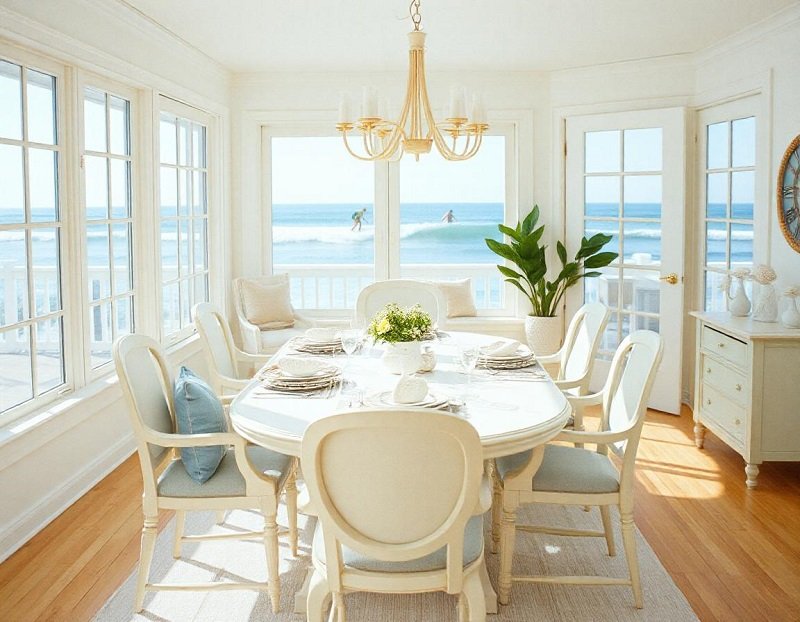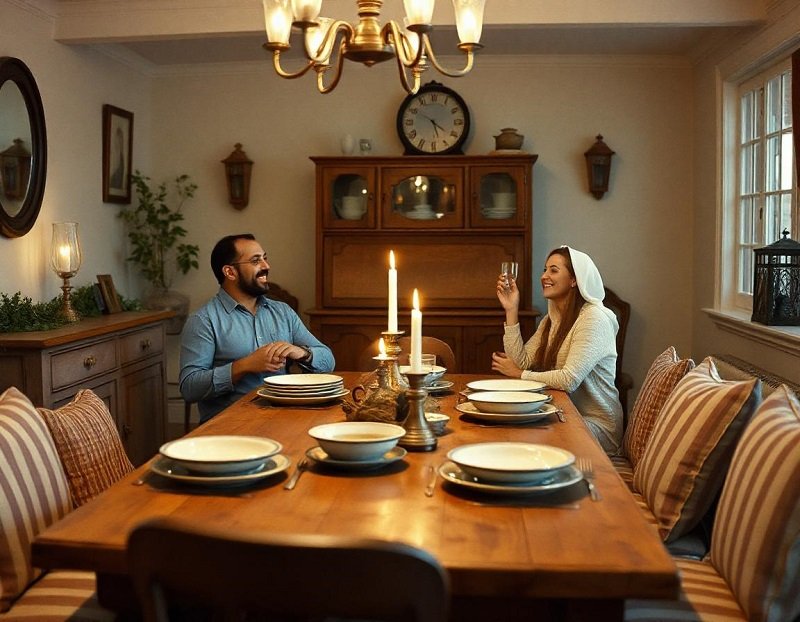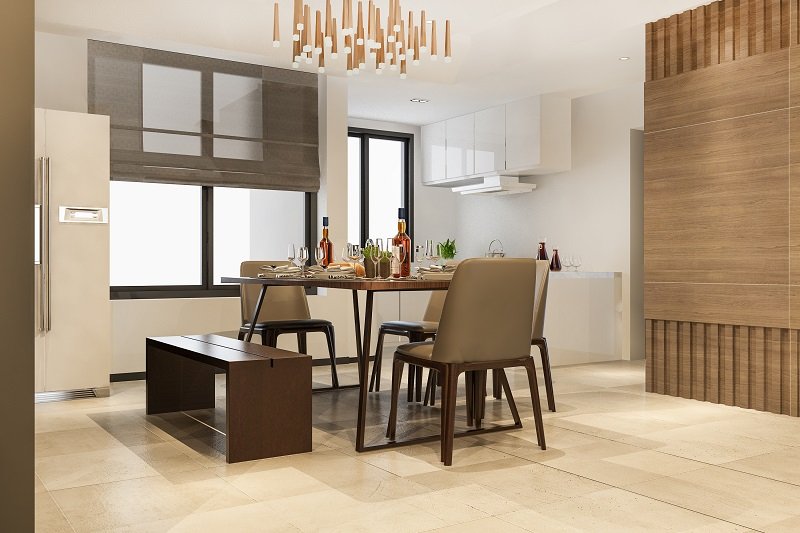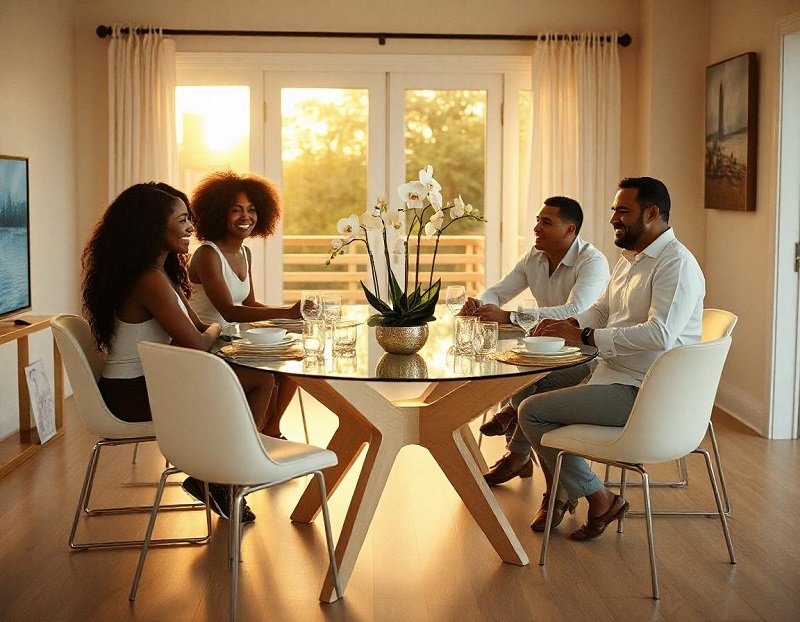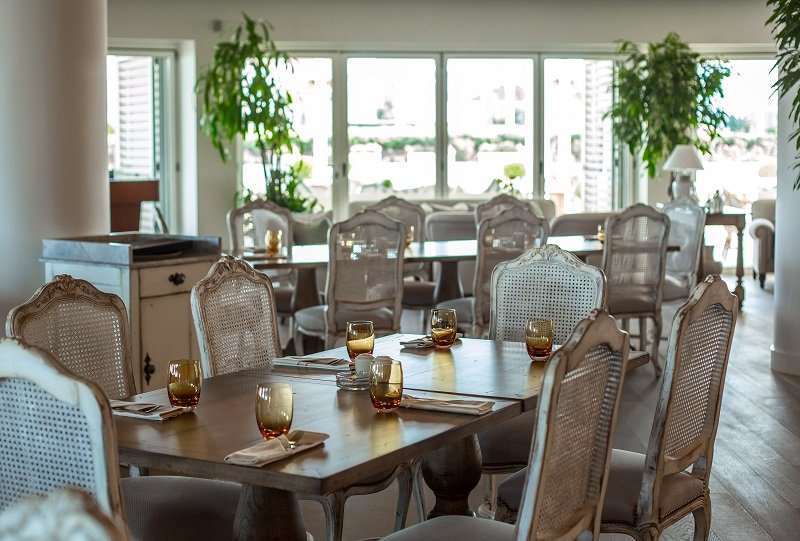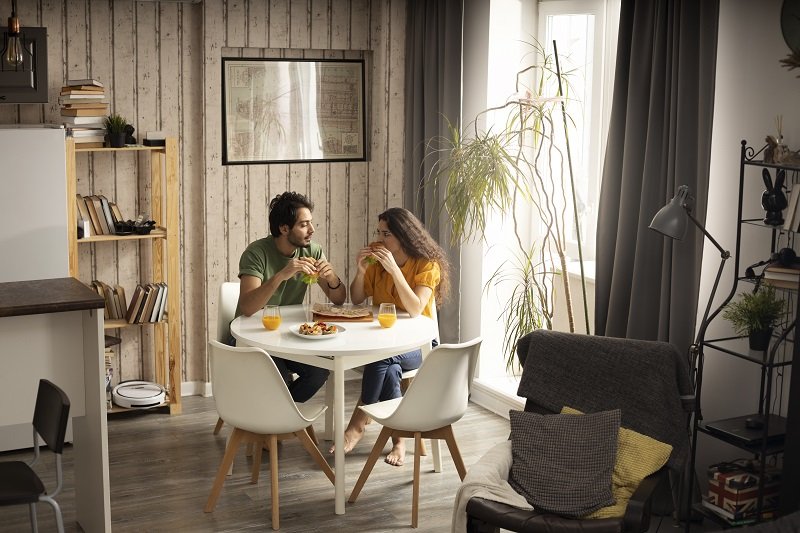Blog
Tips for Arranging Your Dining Room Table Set
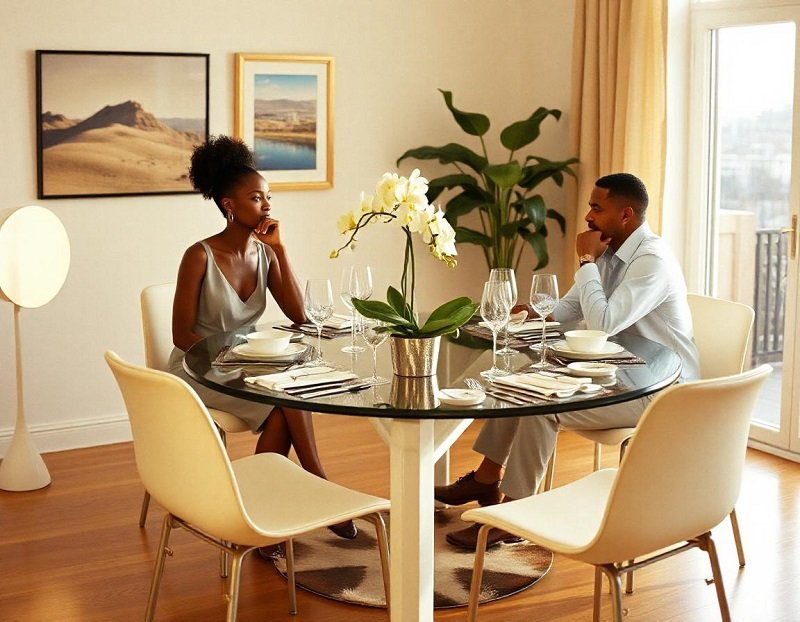
Introduction
From the simplest nook for breakfast in a small apartment to a large dinner space in a bigger home, what matters most is the arrangement of the dining room table set in terms of both appearance and functionality. For many of us, the dining room is the center of our homes: a place to tell stories around the table and where decoration either makes or breaks these special moments. Here, we will take you through practical tips on setting up your dining table for maximum space and increased comfort, which reflects your personal taste.
Measure Before You Buy
One of the worst mistakes a lot of people make in furnishing their dining room is to fall in love with a dining set that looks perfect in the showroom, only to realize it’s either way too large or way too small for your space once you bring it home. Because of this, measuring your space before you ever start shopping should be the very first step to arranging your dining room table set.
Avoid these dilemmas by measuring your dining area. First, note the dimensions of the whole room, both length and width. Note architectural elements such as windows, doorways, or built-in cabinets that may further limit the space available for a dining set to be placed.
Consider the Room’s Focal Point
Every room has a natural focal point—a feature that draws the eye and serves as the anchor of the space. For instance, within the dining room, this could be a chandelier, a beautiful piece of artwork, or even a very beautiful window. While arranging your dining set, it’s of key importance to place it under the room’s focal point. This not only charges the space with good energy but also presents a visually appealing look regarding the dining room.
To create this, first decide upon the focal point of your dining room. Then, as you position your dining set, arrange the pieces to complement that feature and enhance its beauty. For instance, if your focal point is a grand bay window, place the table so that diners get a view while they are seated. If it’s the chandelier, center the table underneath to maximize its effect.
Incorporate Versatile Seating
Consider a versatile seating option that converts a dining room from its formal state to more of a casual, multipurpose space. Of course, this could also involve meeting the demands of variable seating for other needs and other occasions.
Include multipurpose seating options, such as:
- Benches: Benches can be used in areas where space is limited. When they are not in use, they can easily slide under the table. Moreover, benches can offer extra seating space compared to the number of chairs that can be placed around a table.
- Stools: These are a good choice of additional seating without consuming much space. They mostly fit informal meals or large gatherings or parties.
- Fixed-height adjustable chairs: The chairs must be of several different heights and either easily moved or stacked.
Accessorize Thoughtfully
Accessories will make or break the look of a dining set. It is possible to increase the appeal of any table by accessorizing wisely from the choice of table linen to the centerpiece.
Imagine a formally set dinner table with just a simple, almost understated centerpiece, like a vase of fresh flowers or perhaps some sort of stylish bowl. Add some matching placemats and coordinating napkins to finish off the look. These kinds of gadgets introduce individuality and class into the dining room without overwhelming it.
Consider the following when accessorizing:
- Centerpieces: Use something that reflects your taste, such as a decorative bowl, a candle arrangement, or a floral centerpiece. Just make sure it’s proportional to the size of your table.
- Use tablecloths, runners, and placemats for color and texture. These are easily changed to suit different occasions or seasons.
- Lighting: A cleverly chosen light fitting will set the tone of your dining area. Be it pendant lights, chandeliers, sconces, or any other, make sure the lighting reflects the overall design.
Maximizing Dining Room Space
Maximizing space is very important, especially in small dining rooms where every inch counts. Proper arrangement can make you get the most out of your dining set without cramped feelings.
Consider this: If your dining area is small, then the arrangement must allow easy passage and movement and not block any pathways at all. Make sure there is enough space for people to pull chairs comfortably and leave space to approach the table without bumping into the walls or furniture.
Key focus:
- Distance from Walls or Cabinets: Allow a space of at least three feet between your table and walls or cabinets for chair movement and passage.
- Distance to Kitchen Units: If your dining set is near the kitchen, ensure ample space for easy service and movement between the two spaces.
- Room for Plates and Cutlery: Leave sufficient space on the table for place settings—without overcrowding. Use a larger table or extend the table if possible.
- Room for Elbows: Allow ample space so that diners can easily pull out a chair to sit down without bumping elbows. It creates a more comfortable dining experience and helps with crowding.
Add a Bench
A bench as part of your dining set can provide extra seating or a different feel to your design. Benches can effectively save space while creating casual sophistication for your dining room area. Place it on one side of the table to give it a relaxed and informal setting. It may also be used in smaller dining rooms as a space-saver. Pick a bench that fits well with your dining set and the decor of the room. Choices include an upholstered one for extra comfort while sitting or wooden ones in case you are after that rustic look.
The More Stools, The Better
If your dining area allows it, extra stools provide flexible, stylish, practical seating. Stools can be used to provide additional seating when required, or simply for decoration when not in use.
Imagine this: A dining set with a few extra stools tucked neatly around the edges; when guests arrive, you pull out the stools and you can accommodate all without having to change the entire set-up of your table.
Here’s how you can effectively work with stools:
- Versatility: Stools can be used for additional seating at the table or as single chairs around the room. They can also be used for additional seating to carry out various activities like casual dining or sitting and playing games.
- Style: Stools either to match or complement the dining set. This shall range from an upholstered stool for comfort to metal stools for that modern touch.
Dining Room Design Theme
An interior design theme for the dining room is just the thing required to perhaps bring the whole look of the room together if you want a comprehensive look or just a stylish look. Consider your dining set; how does it fit into the overall design of your home, and choose something that suits your decor.
Why is this important? When you’ve got a design theme for your dining room, the dining set and décor work together in perfect harmony. This improves the overall beauty, creating space that looks designed thoughtfully and personalized.
Modern Design
Outline the minimalist line, neutral color, and functional furniture. Reach out for a sleek dining set completed with geometric shapes and the least décor.
Coastal Style
Light, breezy colors and natural materials form the basis of this look, accented by nautical touches. Choose a dining set that says casual and relaxed, with the feel of beachside.
Farmhouse
Let rustic materials, distressed finishes, and cozy details take the floor. A wooden dining table in the living room, for example, is paired with a chair design in a vintage style.
Classic Elegance
Opt for classical designs, opulent colors, and formal settings. Use a dining set with ornate details and elegant upholstery to be able to exude classic appeal.
Essential Dining Room Furniture Pieces
To create a well-balanced dining area, certain furniture pieces are essential. Each piece plays a role in ensuring that the space is both functional and stylish.
- Dining Table: The centerpiece of your dining room, it should be proportionate to the size of the room and meet your seating needs.
- Dining Chairs: Choose chairs that are comfortable and complement the style of your table. Consider their durability and ease of cleaning.
- Sideboard or Buffet: These pieces provide storage for dishes, utensils, and table linens. They also serve as a surface for decorative items or serving dishes.
- Lighting Fixtures: A well-chosen light fixture, such as a chandelier or pendant light, can enhance the ambiance and draw attention to your dining table.
Kitchen with Island
In modern homes, the kitchen often serves as a natural expansion of the dining room. An island installed in the kitchen can, therefore, help achieve increased functionality for any of these space uses—dining, casual dining, secondary prep, or a buffet for larger gatherings.
A well-designed kitchen island enhances functionality and the traffic flow of a dining set, so this can be said to be a versatile and valuable addition to a home.
- Design: Make sure the island’s design goes well with the design of your dining space. It should go along with the general design of the space.
- Functionality: You could add some extras concerning functions like more storage, built-in appliances, or even a seating area.
Conclusion
Setting up a dining set is not just about laying down furniture—it’s about creating a space that complements your everyday life while reflecting your personal style. It is about measuring up before buying, considering a focal point in the room, versatile seating, thoughtful accessorizing, and maximizing on space to achieve that dining area serving dual functionality and invitation purposes.
Remember, it is where sharing stories, enjoying meals, and making memories happen. From modern minimalism to classic elegance through coastal charm, the key is to create a space that seems right for you. So take these tips and apply them in your dining room. Have fun making this space where every meal becomes special in its own way.
FAQs
1- How do I choose the right size dining table for my room?
Measure your dining area and leave at least three feet of space around the table to allow for easy movement. Consider the number of people you need to seat and choose a table size that fits comfortably within the space.
2- What type of seating is best for a small dining area?
In small dining areas, consider using a round or oval table to maximize space. Opt for a bench on one side to save space and add versatility. Stools or stackable chairs can also be useful for additional, flexible seating.
3- How can I create a focal point in my dining room?
Identify a natural focal point such as a statement light fixture, artwork, or a beautiful view. Arrange your dining table and other elements to enhance and complement this focal point.
4- What are some versatile seating options for a dining room?
Consider incorporating benches, stools, or adjustable chairs. Benches can offer extra seating and a casual feel, while stools provide flexible options and can be moved as needed.
5- How can I maximize space in a small dining room?
Use a round or oval table, add a bench for additional seating, and ensure there’s enough space around the table for comfortable movement. Choose furniture that fits the scale of the room and avoid overcrowding.
6- What are some essential dining room furniture pieces?
Essential pieces include a dining table, dining chairs, a sideboard or buffet for storage, and appropriate lighting fixtures. These elements create a functional and cohesive dining area.
7- How do I choose the right design theme for my dining room?
Select a design theme that complements the rest of your home’s décor. Consider styles such as modern, coastal, farmhouse, or traditional, and choose furniture and accessories that reflect this theme.
8- Can I use a kitchen island as additional dining space?
Yes, a kitchen island can provide extra dining space, especially with added stools. It can also serve as a prep area or buffet, enhancing both functionality and flow between the kitchen and dining area.
9- What are some tips for accessorizing my dining table?
Use centerpieces that reflect your style, such as a vase or decorative bowl. Add table linens like placemats and napkins to introduce color and texture. Choose lighting that complements the table and overall design.
10- How can I incorporate a bench into my dining set?
Position the bench along one side of the table to add casual seating. Ensure it complements the style of the table and room. Benches can be upholstered for added comfort or made of wood for a more rustic look.


